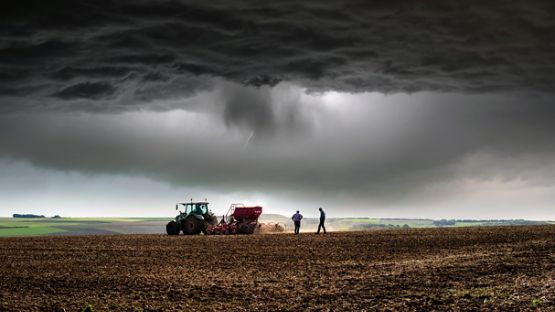We frequently ask our business clients about the biggest challenges they’re facing. Our 2023 Aviva Canada Risk Insights Report tells the story of what those challenges are, including the key ones that keep business leaders up at night. This year, concerns include economic uncertainty, business interruption and the skilled worker shortage.
“Across all sectors and business sizes, Canadian businesses continue to experience inflationary pressures, rising costs, supply chain issues, geopolitical risks and fears of an economic recession. One-third of the businesses we spoke with say they’re very concerned,” said Aviva Canada’s Chief Executive Officer, Jason Storah in the report.
“The businesses that will thrive are always the ones that take the opportunity to examine the way they manage risk.”
Mitigating risk requires vigilance
Current market conditions are clearly top-of-mind for many Canadian businesses, and it’s important to develop strategies to manage them. However, Aviva Risk Management Solutions (ARMS) experts advise that traditional risks to businesses must also continue to be properly assessed and addressed. These potential risks include fire, water, slip/trip/fall, auto incidents and other industry-specific risks.
While larger businesses may have resources that allow for the implementation of robust risk management practices, businesses of all sizes can adopt and implement a number of these practices and processes to mitigate risk, regardless of budget.
Business policies for risk mitigation
Our risk management team recommends that smaller to mid-sized businesses ensure that they have basic risk management policies in place, many of which come with low or no cost. Some of the most important are:
- Emergency response plan: a document that outlines the series of steps your organization will take during a critical event, such as a fire, flood or cyber-attack, to ensure employee and customer safety and minimize the impact on operations.
- Hot work management program: a set of risk mitigation policies and procedures to control or eliminate hot work (e.g. welding, soldering) hazards, including precautions before, during and after the hot work occurs.
- Fire protection impairment: a guideline that monitors and manages the fire protection system and outlines what safety precautions will be taken if equipment such as sprinklers or fire pumps are out of service, whether for maintenance or equipment failure.
- Maintenance program: the strategy employed to maintain machinery, equipment, and facilities, including documentation and inspection/maintenance schedules for each item.
- Self-inspection program: an integral part of risk mitigation and safety program, this identifies all aspects of the premises that need to be inspected regularly, including a breakdown and checklist of the components inspected.
- Slip, trip and fall program: a risk reduction plan that outlines the proactive ways you prevent slips, trips and fall for workers and visitors to your building. This risk management plan should identify potential hazards and document all prevention steps taken (e.g. shoveling snow and applying salt to icy walkways).
- Accident/investigation procedure: a formal process for documenting every incident, no matter how minor, involving a member of the public becoming injured on your property. Every “near miss” incident should also be reported to help prevent future incidents and protect your property.
- Risk transfer policy: a risk management and control strategy that shifts responsibility of risks to appropriate third parties wherever possible, e.g. ensuring snow removal companies assume all slip, trip and fall liability in a binding contract.
- Contractor management policy: a risk management document that outlines all the tactics your business takes to vet, train and supervise contractors while on-site to ensure safety for all.
- Health and safety procedures: a written action plan that identifies and controls hazards, defines safety responsibilities and emergency responses to prevent accidents. This risk mitigation policy may be prepared and overseen by a health and safety committee.
- Training program: a plan that outlines all aspects of training throughout the business, including health and safety and job or equipment-specific knowledge requirements.
- Personal use policy for vehicles: establishes basic rules employees must follow when using company vehicles (e.g. how, where and by whom it may be driven outside of working hours) and disciplinary action for misusing vehicles.
Risk mitigation policies like these do not have to be complex, costly or time-consuming. It’s important to consider the possible risks in each area, the right proactive and preventative solutions, and procedures for when an incident occurs.
Additional resources for risk mitigation for businesses
ARMS is here to be a partner in risk management - we have materials that can easily be adapted by many businesses across multiple industries. We can help manage risk for a number of exposures related to:
- Construction
- Occupancy
- Protection
- Exterior exposures
- Business interruption
- Liability
- Human element programs
Our out-of-the-box risk management solutions can be customized as needed and help clients limit losses and protect their businesses from the risks that are inherent in their industry.
For more information, reach out to an Aviva Risk Management Solutions specialist.













